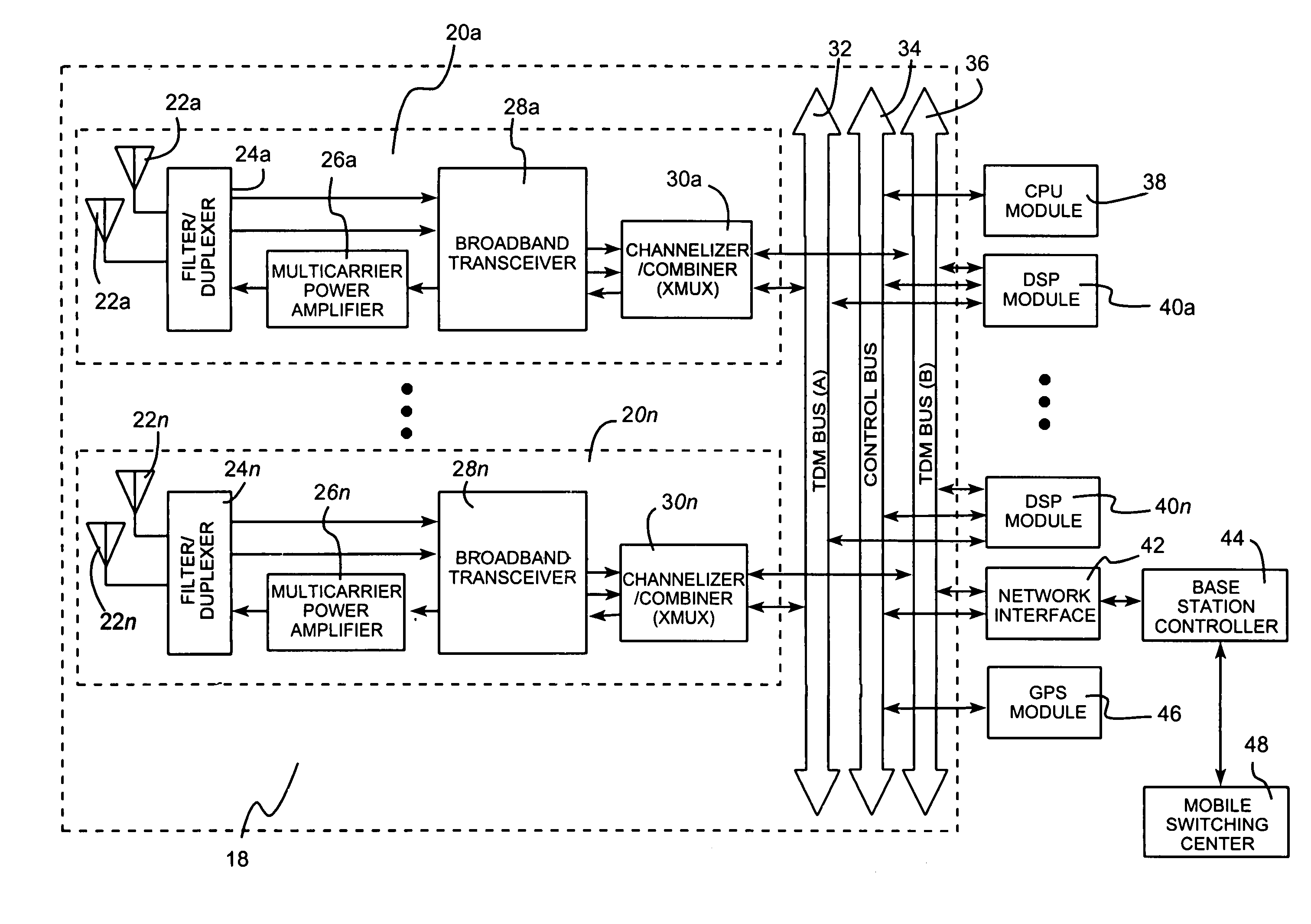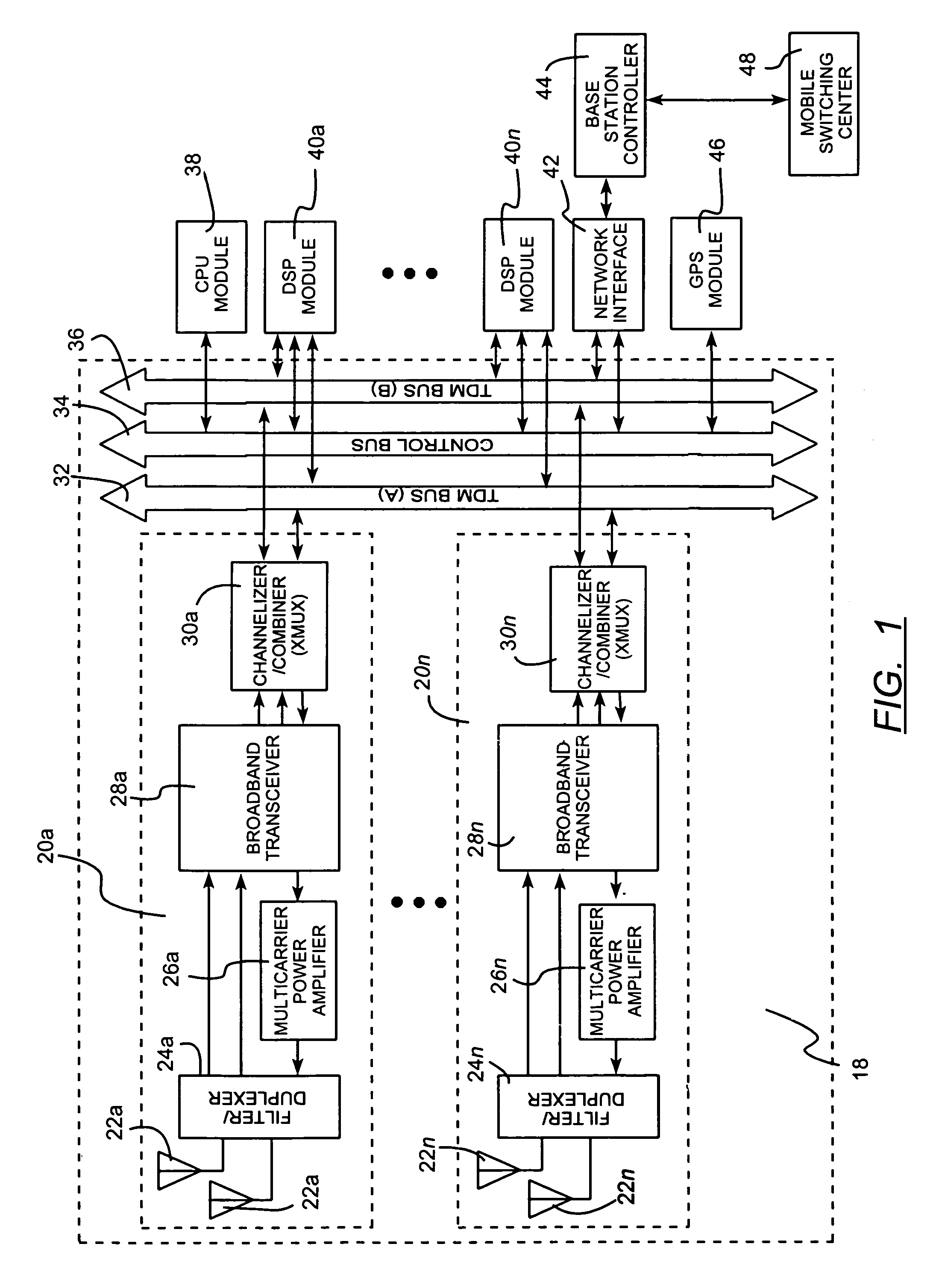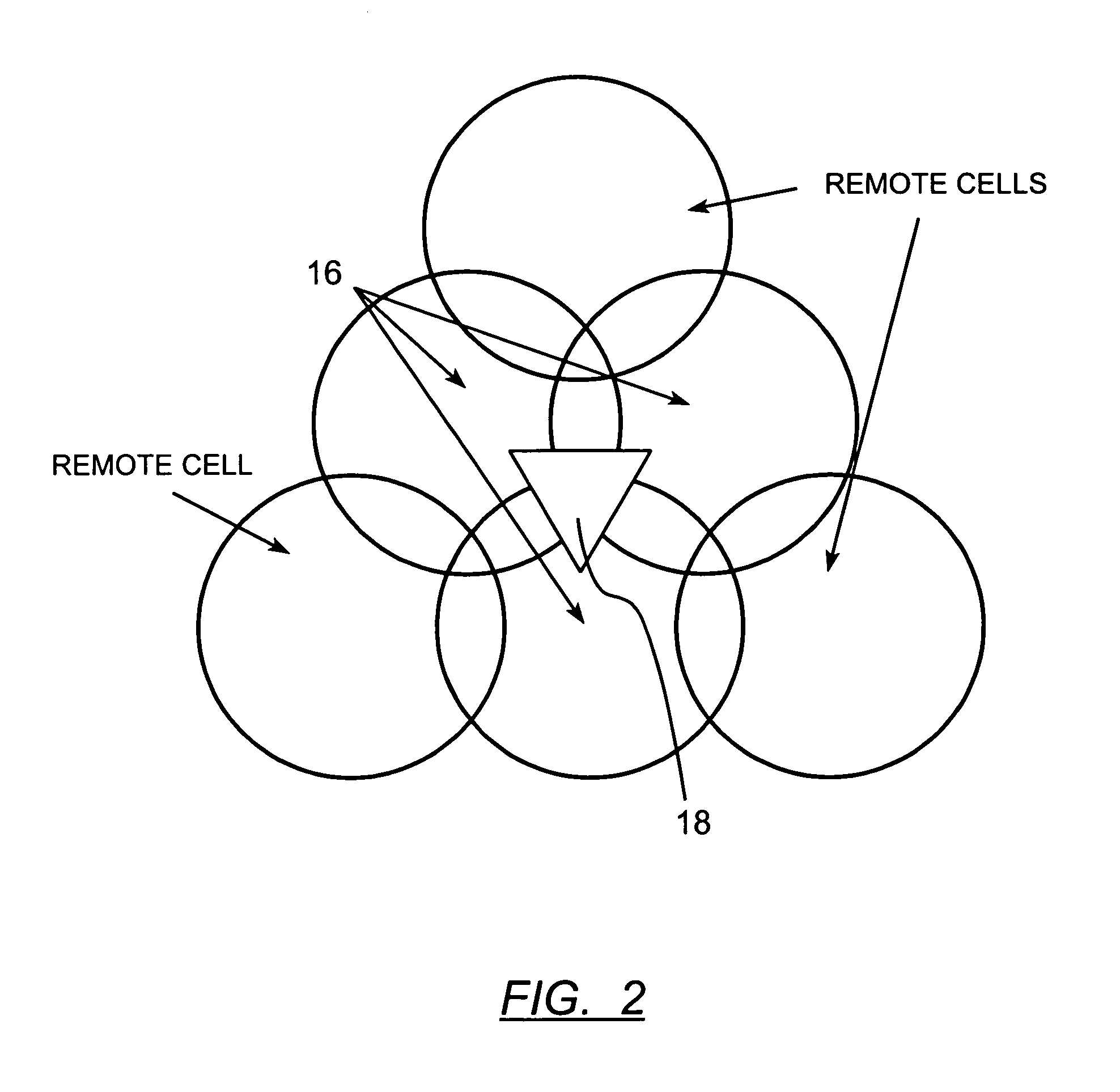Method for dynamic allocation of wireless base station DSP resources
- Summary
- Abstract
- Description
- Claims
- Application Information
AI Technical Summary
Benefits of technology
Problems solved by technology
Method used
Image
Examples
Embodiment Construction
[0038]Referring to FIG. 1, a block diagram of an apparatus for increasing the number of calls processed by a base station, according to the present invention, is illustrated. A broadband base station (BBS) 18 communicates with a Base Station Controller (BSC) 44. The BSC 44 interfaces with multiple BBSs 18 for concentration of traffic to a Mobile Switching Center (MSC) 48. The BSC 44 performs mobility management and network interface management associated with mobile units as calls become active and terminate, as well as when mobile units move from the coverage area of one BBS 18 or cell to another.
[0039]As shown in FIG. 2, the BBS 18 can support multiple sectors 14, each of which can support one or more cells 16. For each of the multiple sectors that the BBS 18 is separated into, the BBS 18 will contain a sector module 20a–20n. These sector modules 20a–20n will each have a set of two antennas 22a–22n, a filter / duplexer 24a–24n, a multicarrier power amplifier 26a–26n, a broadband tra...
PUM
 Login to View More
Login to View More Abstract
Description
Claims
Application Information
 Login to View More
Login to View More - R&D Engineer
- R&D Manager
- IP Professional
- Industry Leading Data Capabilities
- Powerful AI technology
- Patent DNA Extraction
Browse by: Latest US Patents, China's latest patents, Technical Efficacy Thesaurus, Application Domain, Technology Topic, Popular Technical Reports.
© 2024 PatSnap. All rights reserved.Legal|Privacy policy|Modern Slavery Act Transparency Statement|Sitemap|About US| Contact US: help@patsnap.com










